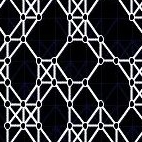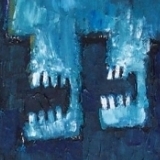Projects

The Synbiotic project aims at developing formalisms and tools for specifying global spatial behavior and its compilation into biological components. The long term goal is to enable the collective behavior of a population of bacteria to create artificial bio-systems. Our part is a high-level tool for specifying global patterns which can then be downward-compiled to lower-level specifications.

DEVA is an example of an artificial embryogeny. A non-linear mapping between representation and pattern was used to generate "organisms" for a design optimization task. The method was applied to structural design.

TEFs are a means of defining transformations on an image database, highlighting important sub-patterns of the images. The goal is to improve classification of the database. We have applied our technique to medical cell images and to the recognition of artistic style.

EvoEco is an interactive evolutionary art system where animations are generated via ecosystemics. The Monash EvoEco site includes an interactive applet, more information, and dynamic and static galleries.

Bluenome was my first attempt at creating an artificial embryogeny. The system was first explored for it's capacity to produce images with various functional properties, and then used in a simple simulated robotics task.

Sometimes, I fancy myself a painter.

The Comic and Graphic Novel Panel Database (CAPD) is a database of images, collected for the purpose of training a classifier to recognize an artistic style relative to other samples and a control group collected randomly from Google images.
Also:
- A-Chat, a browser-based synchronous chat designed with accessibility in mind.
- Source code for the 2D environment generator.
- Source code for the 2D neighbourhood representation.
- I used to teach CART 363: Advanced Languages of Programming, at the Department of Computation Arts, Concordia University.